In PART ONE of this two-part series, we explored the early beginnings of the Street Fighter Franchise. Where it all began.
In this article, Part Two will explore Street Fighter 4, 5 and the lead up to the highly anticipated Street Fighter 6 which is scheduled to be released in June of 2023.
If you are a fan of the Street Fighter series and you happen to be a fan of Star Wars, then maybe you see the symbolism here. Street Fighter, much like the original Star Wars franchise, could be thought of as two sets of trilogies.
|
Original Star Wars Titles |
Symbolic Comparison to Street Fighter |
|
Episode IV: A New Hope
|
SF IV: A New Hope |
|
Episode V: The Empire Strikes Back
|
SF V: The “Parry” Strikes Back |
|
Episode VI: Return of the Jedi
|
SF VI: Return of the Parry |
The Second Trilogy: Street Fighter 4-6 (2008-???)
“Street Fighter 4 was about reviving a passion…”
-Yoshinori Ono, Street Fighter Franchise Producer

Yoshinori-san with his favorite Blanka figurine
[Image source: Street Fighter Wiki]
I believe Yoshinori-san described it perfectly. Let’s not forget that Capcom took a very long break between the releases of Street Fighter III and Street Fighter IV, and for good reason.
As mentioned in PART ONE, Capcom struggled to break even on the money they had invested with Street Fighter III. This left Capcom executives scratching their heads thinking, “where did we go wrong?” and this is one of the main reasons why the fighting game community was forced to wait nearly ten years for the release of Street Fighter IV.
Waiting for Street Fighter IV…
If you were hanging out in the arcade scene sometime around the late 90s to mid-2000’s and you were into fighting games, you felt the absence of Street Fighter 4. At that time, you were probably playing at least one of these four titles:
- Street Fighter Alpha 3 (1998)
- Street Fighter III: 3rd Strike (1999)
- Marvel Vs Capcom 2 (2000)
- Capcom Vs SNK 2: Mark of the Millennium 2001 (2001)
I was one of those people in the arcade scene back then, and although everyone seemed to be happy with playing at least one of these games, I remember us all asking “Where is Street Fighter 4?”. There was no social media or marketing campaign to relieve are inquisitive minds. I guess we had to stick with what Capcom gave us.
Back then, I was frequenting a local arcade that had a small but dedicated group of fighting game enthusiasts. Our go-to games were Street Fighter III: 3rd Strike and Capcom Vs SNK 2, and we played those games well into the mid 2000’s because we simply didn’t have anything else.
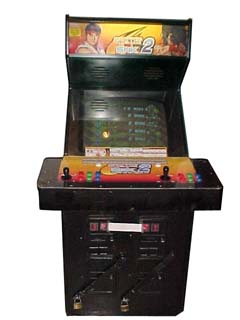
[Image source: Arcade Museum]
These games were great but to put it into perspective, these games did not have new releases with extra characters or new add-ons. We were essentially playing games that were many years old and we played it as if it were brand new. Like a kid who was always one gaming console generation behind, we PRETENDED like it didn’t bother us one bit… but it did.
If a younger gamer today was forced to play a game that was over five years old with absolutely no updates, or no-word on an upcoming new release, they would most likely post something on social media complaining about how this inconvenience has “ruined their life”, they would demand “a refund” and then start a viral hashtag to boycott the entire franchise.
Heck, EVEN Street Fighter II Turbo (1994) was still making the rounds in the arcade scene and the matches I played in and witnessed were probably some of the most epic “footsie” chess matches ever. The matches in SF2 Turbo were short and sweet and the game acted as a beautiful throwback to the much simpler “Hadoken” memories of the early 90s.

[Image source: Arcade Museum]
Not all was lost! Despite the burning question “when and where is Street Fighter IV?”, Capcom had bought plenty of time with their older releases to keep the dedicated fans satisfied. These fans were the hardcore ones. They were the ones who were willing to keep coming back to play the same familiar game, with the same familiar music, using the same familiar combos and playing against the same familiar trash-talking arcade rivals.
Online console competitive play was available but was not popular just yet. Despite the fighting game community yearning for a well-maintained and well-designed online alternative to in-person arcade play, they probably did not fathom how much the gaming consoles would replace the arcade scene. Sadly, this would be the beginning of the end of the old-school fighting game arcade experience.
Street Fighter IV (2008)
Episode IV: A New Hope

[Image source: Street Fighter Wiki]
The world was very different by the time we got to 2008. Most people were on Facebook by this point, sharing pictures that some of us did not care to see.
Arcades were closing down like old school cheat code inputs: left-right, left -right, up-down, up-down. The old familiar arcade I frequented on a weekly basis in the mid-2000s was now permanently closed.
Consoles and PCs were now the dominant players in the gaming market but Capcom seemed to be fully aware of that. This is probably why Street Fighter 4 wasn’t just released for gaming consoles, but later released on PC as well.
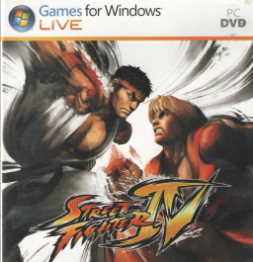
[Image source: Amazon]
BUT If there was any single game that could potentially revive the beloved arcade scene, surely it would be Street Fighter IV? Right?!?
The End of The Arcade As We Know It?
Despite the Street Fighter IV franchise being a huge commercial success on the console market, it unfortunately did not perform any “ultra combo” miracles on the arcade scene. In my experience, it was difficult to find a thriving arcade in 2008, let alone a Street Fighter IV arcade cabinet. It is difficult to find any official arcade cabinet sales numbers for this franchise, however, I can confidently say that this cabinet did not sell well.
First off, they were all imported from Japan so you had to factor-in shipping costs if you planned on ordering directly from Capcom. If you chose not to order it directly from Japan and instead decided to purchase from a local re-seller, you would be spending somewhere around $21,000 USD/cabinet and re-sellers would often require buyers to buy a minimum of four machines! Some buyers opted to purchase the boards and swap them into older arcade cabinets in order to reduce the cost. It just wasn’t quite the same…
Secondly, console and PC gaming were killing off arcades one by one. These were the days of Halo, Warcraft, and Call of Duty. With that being said, Street Fighter IV arcade cabinet sales didn’t have a fighting chance.
The “real” players were now at home, "talking trash" from the safety of their couch on a Bluetooth headset. It just wasn’t the same…

[Image Source YouTube]
In order for any surviving arcades in 2008 to justify a purchase of a Street Fighter 4 cabinet, they would have to expect 30,000-50,000 plays per cabinet at one dollar per game to justify this purchase. Perhaps a lesson was learned when Capcom decided to have limited console releases for Street Fighter III, and maybe they now knew that consoles and PCs, not arcades, would be the way of the future.
Street Fighter IV: The Game That Kept on Giving
Worldwide revenue sales for the series generated over $400 million USD in console game purchases alone. Much like Street Fighter II, SF4 revived the fighting game genre once again. There were four versions in total and even a handheld version as well:
- Street Fighter IV – PS3/XBOX360/PC (2009)
- Super Street Fighter IV – PS3/XBOX360 (2010)
- Super Street Fighter IV: 3D Edition – 3DS (2011)
- Super Street Fighter IV: Arcade Edition – PS3/XBOX360/PC (2011)
- Ultra Street Fighter IV – PS3/XBOX360/PC (2014)
What made Street Fighter IV a success?
“I don’t want anyone to ever think about parrying in Street Fighter again…. OR say the word Parry again…or even think about hiring any guy named Parry AGAIN!”
-Possibly someone at Capcom Street Fighter Team
All kidding aside, perhaps Street Fighter III was “too ahead” of its time with the introduction of the parrying mechanic which MAY have resulted in some casual fans turning away from the franchise. Maybe this is why Capcom abandoned the “Parry” mechanic and replaced it with the “Focus” mechanic in their release of Street Fighter IV nearly ten years later.
Yoshinori was right when he said Street Fighter IV was about “bringing the passion back” and man did Capcom deliver!
A Nice Blend of New and Old Characters

Ultra Street Fighter 4 Character Select Screen
[Image Source YouTube]
Ultra Combos

[Image Source YouTube]
Man do I love watching the animations of the Ultra Combos! It’s like a “Hail Mary” in sports terminology. In game, if you managed to successfully land an Ultra Combo, the game would reward you with a pre-rendered animation that showed the “beat down” taking place.
It worked much like a super combo, but the gauge for Ultra Combos were charged only when your character sustained damage during the match. The more damage your character absorbed, the more powerful your Ultra Combo would be. It gave the losing player a fighting chance right till the very end, no matter how bad they were losing. This created an opportunity for some epic comebacks.
Well Designed Online Experience
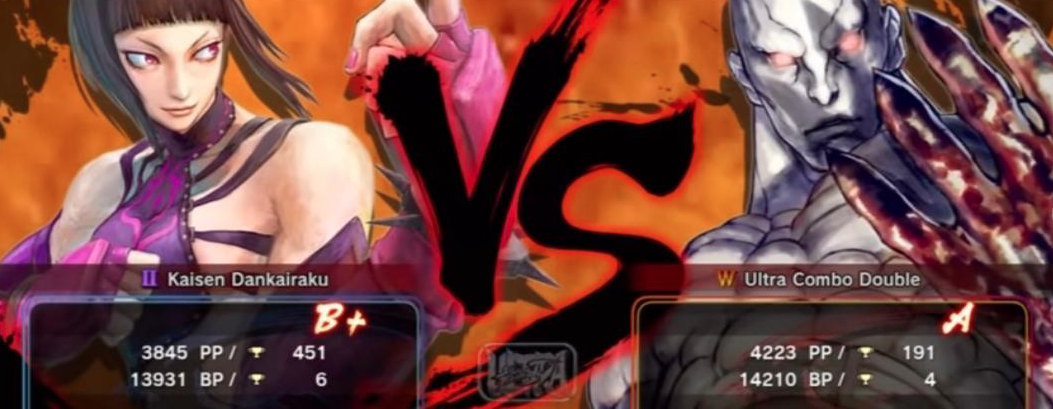
Some highly ranked characters online
[Image Source Reddit]
Hey, it wasn’t the arcade but the online mode in SF4 was well designed for its time! It had a great ranking system that was based on points, not wins/losses, and was character specific.
For example, you could be ranked ‘A’ with Ken but ranked ‘C+’ with Chun-Li” and this character specific system resulted in a pretty fair matching service. The point system would match you up against other players characters in the same "points class" as you.
Focus Attack AKA “Saving Attack” in Japan.
“Parrys” Replacement

[Image Source Street Fighter Wiki]
Focus can now absorb multiple hits and give players a chance to “punish” their opponent much like the parry mechanic from Street Fighter III. The Focus Attack could also be canceled, AKA Focus Attack Dash Cancel, in order to confuse your opponent.
The black ink surrounding a character during a “Focus Attack” was a tribute to Japanese calligraphy which was a very nice touch! The calligraphy touch continued in Street Fighter V and even Street Fighter VI!
Street Fighter V (2016)
Episode V: The Parry Strikes Back
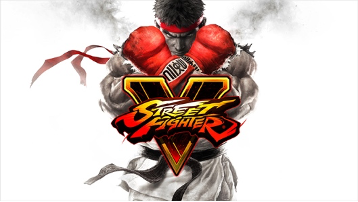
[Image source: Wikipedia]
"We all know that we didn’t put out a complete product, in a way that is a learning experience"
-Yoshinori Ono, Street Fighter Franchise Producer
Can you believe that the developers failed to include the beloved “Arcade Mode” for the initial launch of this game? This resulted in a slow start for sales and might be why we only got three releases:
- Street Fighter V – PS4/PC (2016)
- Street Fighter V: Arcade Edition – PS4/PC (2018)
- Street Fighter V: Champion Edition – PS4/PC (2020)
The initial release of Street Fighter V was not well received by the critics at launch, and there were many patches released to improve on the shortfalls of the game. Some notable problems included a “lack of content” and programming bugs within the game which required “more polish” as noted by Street Fighter franchise Producer, Yoshinori Ono.
Remember how our school teachers taught us about the importance of making a good first impression? Well, the initial release of Street Fighter V looked and smelled like someone who showed up to work after an all-nighter at a European trance rave. Perhaps the developers rushed the launch of this game. The fans were not amused.
Luckily, the fanbase willfully gave massive amounts of critical input back to the developers and thankfully they listened and responded. This input helped launch the release of many patched updates in order to restore the balance of the game.
Even with all these blunders, Street Fighter V went on to sell a total of over 6 million copies across the PS4 and PC platforms, digital downloads included, making it one of Capcom's top 10 best-selling games of all time.
Despite all the updates, there are still some rare programming bugs that can occur when it comes to the frame rate. In a game where timing and execution is everything, frame rate issues can become a big problem.
Others have also argued that the online experience for Street Fighter V wasn’t nearly as good as other fighting games such as Tekken 7 or Mortal Kombat 11.
What was new in Street Fighter V?

Street Fighter V Promo at Gamescom 2015
[Image source: Wikipedia]
Return of the Parry… Sort of.

[Image Source YouTube]
The Parry makes a comeback in Street Fighter V but not every character has the ability to use it and the mechanics are nearly non-comparable to that of SFIII: 3rd Strike. Some characters in the game have more rewarding “Parrying” abilities. On the flip side, executing a successful parry is easier in comparison to SF III: 3rd Strike.
V-Triggers and V-Skills

[Image Source Street Fighter Wiki]
Similar to that of the Ultra Combo from SF IV, V-Gauge is built when your character absorbs damage, blocks attacks and lands crush counters. V-Triggers and V-Skills for each character are unique and specific to the character. For example, Ryu’s V-Skill acts as a super “parry” while Cammy’s enables more mobility and unlocks a deadly throw attack.
Training mode – Frame Data

[Image Source YouTube]
For the hardcore players, training mode got a nice upgrade. Training mode now presents frame data, which is priceless information when training with your go-to character and seeing how they perform against other specific characters.
Street Fighter VI ( June 2023)
Episode VI: Return of the Parry

[Image source: Street Fighter Wiki]
"To be precise, they just ended up being similar to Parry and Focus Attack from previous titles... We didn't go into it thinking 'Let's bring back these past mechanics' at all"
-Takayuki Nakayama, Street Fighter 6 director
In my opinion, Takayuki Nakayama seems to be downplaying the HYPE surrounding the “Return of the Parry” in Street Fighter VI. Much like a player who has their back up against the wall in a game of Street Fighter, perhaps it is best to not "tip-off" your next move.
Here is what we know about Street Fighter VI:
- Parrying Returns AGAIN! But the mechanic is very unique and not like the others. Early reports suggest that it offers big rewards. There is also a “Perfect Parry” which can lead to big rewards for punishment.

Ryu using a "Drive" Parry against Chun-Li
[Image Source StreetFighter.com] -
The “Drive” mechanic replaces V-Trigger. “Drive” gauge can be used like a focus attack or it can be used as a rush combo or even a "Drive” parry. The Drive gauge seems to have multiple uses which will add a lot of strategy into the mix. It can be used both defensively or offensively.
-
Playable on STEAM, PS4, PS5, and XBOX Series X | S

Cover Photo
[Image Source StreetFighter.com] -
18 characters at launch date with some new characters in the mix. The story takes place sometime after Street Fighter III.

[Image Source StreetFighter.com] -
Early Beta versions have featured a Create your own character mode!
-
Modern control system (Simple inputs, with optional one-button special moves)
-
Battle Hub Mode – A social hub where players can hang out and challenge each other to fights. Kind of like the arcade scene?

The Battlehub!
[Image Source StreetFighter.com] -
World Tour Mode – A single-player story mode that includes a free roaming 3D mode
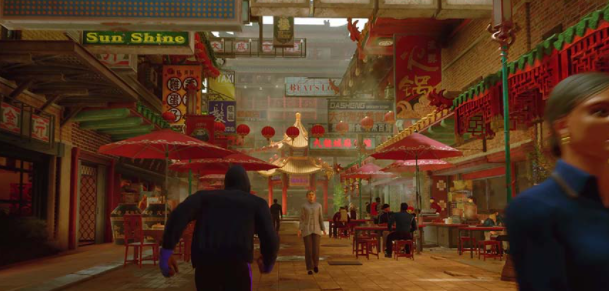
Free Roaming - Street Fighter Style
[Image Source StreetFighter.com]
Final Thoughts
Capcom is presently facing a big challenge with their Street Fighter fanbase. The big problem is pleasing the skilled players by making the game challenging enough for them, but yet not too challenging where they chase away all the “new challengers”. When Capcom leans too much towards one crowd, they lose out on the other. The one-button special moves in Street Fighter VI should encourage a new class of casual players to start playing.
I truly believe the mechanics of the new "Drive" Parrying system in Street Fighter 6 will make or break this game. Street Fighter III created an uneven playing field amongst players with their introduction of Parrying into the franchise, which ultimately allowed the elite players to look and play like gods.
Street Fighter V attempted to build on what Street Fighter III had started when the Parry was brought back but they didn’t quite get it into the “goldilocks” zone.
I hope that the new Parry mechanic can be tweaked just enough to please Street Fighter III elitists like Daigo, but yet allow the “Hadoken” peasants like myself to still be somewhat competitive. If the Parry mechanics are done just right, then maybe I can finally seek revenge against the many players who delivered “Parry” beatdowns on me throughout the course of my Street Fighter career.







